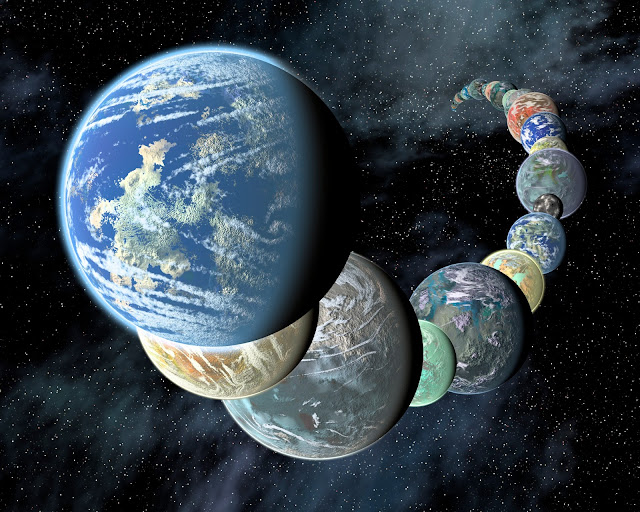Look up at the night sky and you'll see stars, sure. But the sky is also filled with planets - billions and billions of them at least.
That's the conclusion of a new study by astronomers at the California Institute of Technology in Pasadena, which provides yet more evidence that planetary systems are the cosmic norm. The team made their estimate while analyzing planets orbiting a star called Kepler-32 - planets that are representative, they say, of the vast majority of planets in our galaxy and thus serve as a perfect case study for understanding how most of these worlds form.
"There are at least 100 billion planets in the galaxy, just our galaxy," says John Johnson, assistant professor of planetary astronomy at Caltech and coauthor of the study, which was recently accepted for publication in the Astrophysical Journal. "That's mind-boggling."
"It's a staggering number, if you think about it," adds Jonathan Swift, a postdoctoral student at Caltech and lead author of the paper. "Basically, there's one of these planets per star."
The planetary system in question, which was detected by NASA's Kepler space telescope, contains five planets. Two of the planets orbiting Kepler-32 had previously been discovered by other astronomers. The Caltech team confirmed the remaining three, then analyzed the five-planet system and compared it to other systems found by Kepler.
The planets orbit a star that is an M dwarf - a type that accounts for about three-quarters of all stars in the Milky Way. M-dwarf systems like Kepler-32's are quite different from our own solar system. For one, M dwarfs are cooler and much smaller than the Sun. Kepler-32, for example, has half the mass of the Sun and half its radius. The radii of its five planets range from 0.8 to 2.7 times that of Earth, and those planets orbit extremely close to their star. The whole Kepler-32 system fits within just over a tenth of an astronomical unit (the average distance between Earth and the Sun) - a distance that is about a third of the radius of Mercury's orbit around the Sun.
The fact that M-dwarf systems vastly outnumber other kinds of systems carries a profound implication, according to Johnson, which is that our solar system is extremely rare. "It's just a weirdo," he says.
Image Credit: NASA/JPL-Caltech
Explanation from: http://www.nasa.gov/mission_pages/kepler/news/kepler20130103.html




Really good...!
ReplyDeleteSo, although there are about 100 BILLION planets in our galaxy, the type of star systems that vastly outnumber those similar to our Solar system and cannot sustain anything like the forms of life evolved on Earth is so staggeringly large that, in effect, our own Solar system is an extremely rare type of phenomenon within our galaxy. We might not be unique in the Milky Way, but we are pretty special :-)
ReplyDeleteFlattering as that might be to us Earthlings, ever ready to congratulate ourselves on one thing or another, one of the implications is that there are precious few (if any, really -- we don't yet know that) alternative planets in our galaxy on which we could eventually re-locate ourselves and other living species whose presence would make life worth living for creatures such as us.
We'd better make sure we take care of Earth, its natural resources, and its bio-systems (its ecological systems) so that we can flourish and develop and evolve culturally over the next billion of years or so -- the time we may well need in oder to figure out what else we need to figure out and develop and invent in order to continue the marvellous adventure of Life.
Thanks for the earliest advice haha.
ReplyDeleteIts2016
I'm the only one here my last name is castañeda(commando)
ReplyDeleteWhy I have to work then it's to enjoy not to suffering.
ReplyDelete